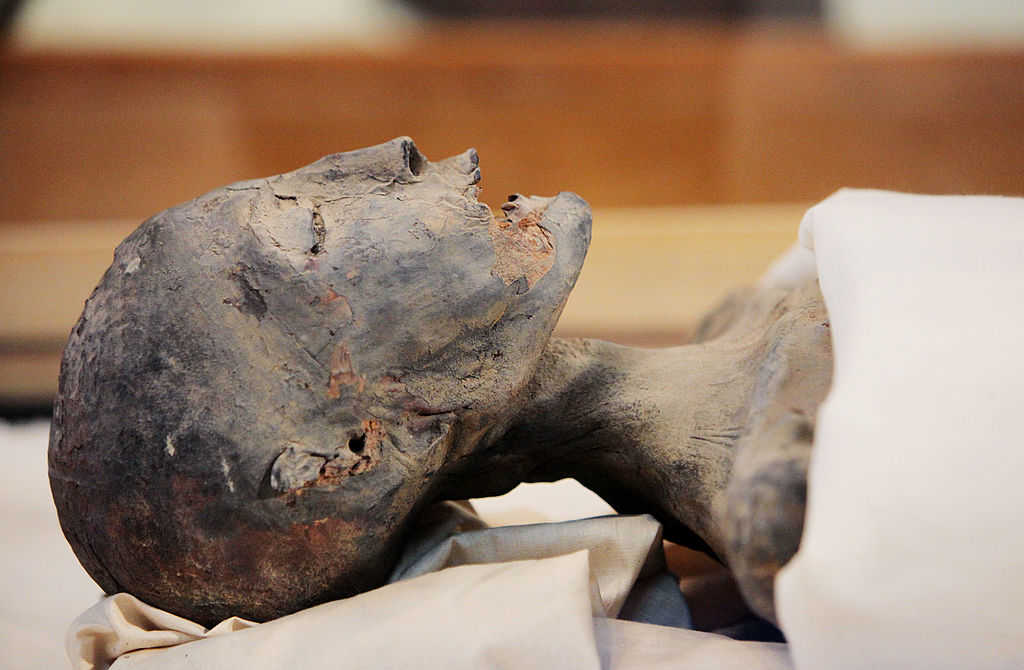Did DNA analysis of Egyptian mummies just prove true some key Old Testament Bible verses?
That’s the question some Christian media outlets are asking after researchers at the University of Tuebingen and the Max Planck Institute for the Science of Human History in Germany made some surprising genetic finds while decoding mummies’ genomes.
The study, which was published in Nature Communications, could have some sweeping and long-lasting ramifications, as it might change commonly held conceptions about the genetic history of the Egyptians. CNN has more:
The study concluded that preserved remains found in Abusir-el Meleq, Middle Egypt, were closest genetic relatives of Neolithic and Bronze Age populations from the Near East, Anatolia and Eastern Mediterranean Europeans. Modern Egyptians, by comparison, share much more DNA with sub-Saharan populations.
The findings have turned years of theory on its head, causing Egyptologists to re-evaluate the region’s history while unlocking new tools for scientists working in the field.
The study involved analyzing 166 bone samples that came from 151 mummies dating back between 1400 B.C. and A.D. 400. Then, experts looked for genetic differences when samples were compared to modern-day Egyptians.
And here’s what they found: the samples strongly connected with non-African populations east of the Mediterranean Sea, CNN reported.
“This is not just the DNA of one person. It’s the DNA of the parents, grandparents, grandparents’ parents, grand-grand-grandparents’ parents and so forth,” Johannes Krause, head of the Max Planck Institute, told the outlet. “So if we don’t find sub-Saharan African ancestry in those people, that is pretty representative, at least for Middle Egypt.”
So, what does this all mean, biblically speaking? According to The Christian Post, some experts believe that the DNA evidence helps bolster the biblical narrative saying that the first Egyptian dynasty emerged through Noah’s son, Ham.
Genesis 10:5-6 reads: “The sons of Javan: Elishah, Tarshish, the Kittites and the Rodanites. (From these the maritime peoples spread out into their territories by their clans within their nations, each with its own language.) The sons of Ham: Cush, Egypt, Put and Canaan.”
Breaking Israel News has more about how these verses purportedly mesh with the findings:
These new findings fit in with the Dynastic Race Theory espoused by archaeologist David Rohl. Rohl’s theory is that the ancient Egyptians arrived over sea from Mesopotamia, conquered the Nile Valley, and established the first Egyptian dynasties. This is in direct contradiction to the previous theory that the first Egyptian rulers and much of the population arrived by a land route from Africa.
Rohl based this theory, which he explained in his book Legend – The Genesis of Civilisation, on the Biblical account of Ham, the son of Noah. According to Rohl’s theory, Ham and his people moved from Mesopotamia to settle in Egypt after the flood. Rohl explains that this is the basis for Horus, one of the most significant Egyptian deities, who was, in fact, Ham. The name ‘Horus’ means “the distant one”, implying that he came from far away.
In the end, the abstract for the study proclaims that the analysis found that “ancient Egyptian mummies as a genetic source to study ancient human history and offers the perspective of deciphering Egypt’s past at a genome-wide level.”
Read more about these issues here.



